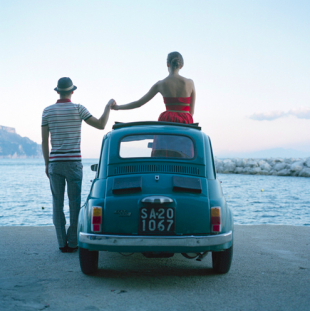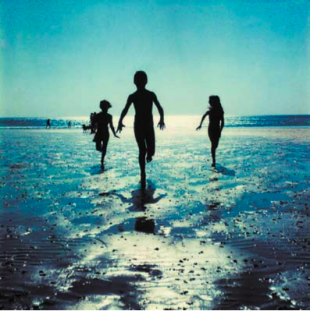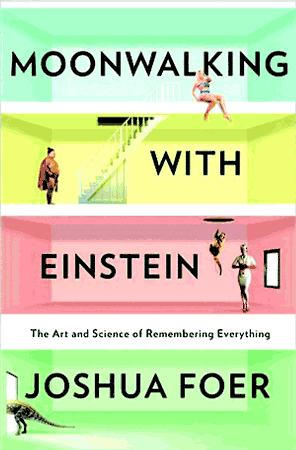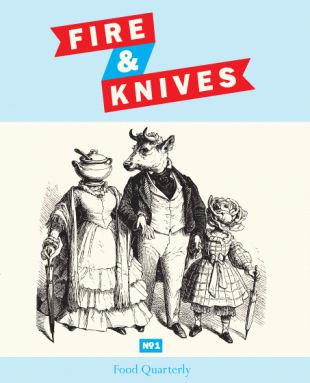
Isaac Reina
Isaac Reina designs very simple leather goods that are handmade in Paris. They offer the minimum necessary functionality with the maximum craftsmanship and quality materials.

Rodney Smith, Photographer
His website is awesome. His photos are awesome. His books are awesome. Need we say more?

Fantastic Man
There’s much to like about this magazine—its paper, typography, subjects, recommendations, and style. But what I love more than anything is its tone, exemplified by this erratum slip.

Laura Smith Scooter Helmet
I saw a friend of mine with this helmet recently and immediately inquired about its provenance. I can guarantee you that its Italian hand-stitched leather is more beautiful than anything you’ll see on a bike helmet in the States.

Caran d’Ache 849 Ballpoint Pen
When it comes to writing instruments, I’ve long subscribed to two rules: 1) don’t spend much money on them and 2) don’t buy ballpoint pens. My tendency to lose pens and pencils explains the first rule. Sure, I would like a Mont Blanc, but I can almost guarantee that, if I made it my primary pen, I would lose it within two years. My distaste for the experience of writing with ballpoints and the visual results of that experience account for the second rule. Last year i gave a friend a Caran d’Ache 849 ballpoint pen for his birthday, and I told him that if I used a ballpoint pen, that was the one I would use. This year, I received a special edition of the same pen for my birthday and have been using it ever since. The results are hard for me to distinguish from those of other ballpoint pens, but the experience of writing with it is phenomenal—organic, smooth, and inspiring. Its weight, size, and balance are perfect. Is there a better ballpoint pen to be had for under $30? No, there is not.

Polaroids by Marion Dubier Clark
I was at the Bibliothèque nationale de France the other day to see the Gallimard exhibit and afterwards stopped by the gift shop. There I found some postcards of photos by Marion Dubier Clark. I especially liked the above photo, “Course” from Le Rozel. It reminded me of a line from Katell Keineg’s song, “At the Mermaid Parade”: “Kicking into the waves / with the last children.” It’s one of the most evocative lines I heard last year, and “Course” pairs perfectly with it. The photo appears in Clark’s book, 100 Polaroids.
Download 100 Polaroids by Marion Dubier Clark.

Tom Waits and Robert Frank
I love instances when two great artists from different disciplines come together, and this photo shoot of Tom Waits conducted by Robert Frank is a perfect example. Frank was shooting Waits for his upcoming album, Rain Dogs,which contains one of my favorite songs of all time, “Downtown Train.” It’s so evocative of everything romantic I’ve associated with New York City since I was 20 or 21, and, in a way, this photo only adds to that feeling. In the text that appeared alongside it in the Sunday Times Magazine, Waits recounts the experience of posing for Frank:
I was trying to imagine myself as a real New Yorker, and I was having a hard time. My wife was pregnant with our second child; we were living down on 14th Street over a Cuban-Chinese restaurant. But at that moment, I was busting at the seams that Robert Frank was photographing me. I just thought, Shoot me now. The record was called Rain Dogs, so we were expecting to find a rainy day, which we did not find. But we found the one rain puddle in the whole park, and I’m kind of down there like a dog. Maybe that was the idea: I’m gonna get down on the dog’s level, and then Robert would get there at a dog’s level with me. Anyway, I don’t know why people in music seem to want to squat down. Maybe we just want to feel close to the earth. I’m still down there, actually. I’m squatting right now.
What They Were Thinking – Tom Waits and Robert Frank (New York Times)
Collapse Into Now by R.E.M.
R.E.M. was my favorite band when I was growing up, and that means, in some way, they’ll always be my favorite band. However, it’s clear that they haven’t quite been the same since drummer Bill Berry left the band in 1997. Although I listened religiously to the albums the band released since then, none of them felt as complete as the ones they released from about 1983 through 1992. So, I’m thrilled to report that R.E.M.’s new album feels organic and complete as some of the band’s best work. It comes out on Tuesday, March 8, 2011. Get thee to a record store like it’s 1990.
Listen to Collapse Into Now on NPR.org until March 8
Buy Collapse Into Now

Moonwalking with Einstein by Joshua Foer
Last Sunday’s New York Times Magazine ran an excerpt of Joshua Foer’s new book about entering and winning the U.S. competitive memory championship. Foer, as you may have guessed, is the younger brother of Jonathan Safran and Franklin Foer. His book is excellent. There have been several documentaries and books over the past seven years or so about competitions that have ranged from somewhat obscure to downright bizarre. Fortunately, Foer’s book is about much more than the competition and his preparation for it. It uses bizarre feats of memory—the order of a deck of cards in under two minutes! 50,000 digits of pi!—as a starting point to explore the place that memory has in our culture—i.e. a decreasingly distinguished one. With the rise of the Internet and search engines, the ability to memorize things has become less and less important. Long before that, the invention of the written word had an even greater effect on rendering memory less necessary. You don’t actually have to know information; you need only know where to find it. Rote memorization is not as valuable as creativity, people tell us.
But yet there is a creativity in memorization and memory. Many of the techniques used in competitive memory involved coming up with outrageous—often disproportionate or obscene—visual images to help remember more banal items. The approach of competitive memory participants that most fascinated me, however, is that they imagine physical spaces in their minds and then populate them with memories. (The “memory palace” is a centuries-old technique for remembering.) Humans evolved to be hunter gatherers and, as Foer recounts, to have excellent spatial memories. Therefore, to remember things, memory gurus take their neighborhoods, homes, and offices, and fill them with memories. In Foer’s example of memorizing a shopping list, a giant jar of pickled garlic stands in front of his childhood home, a woman swims in cottage cheese on the front porch, and smoked salmon rests on the strings of a grand piano in the living room.
We don’t only remember spatial experiences, but we also find them valuable because they’re memorable. One of my issues with much of digital culture is that I find my experiences with it to be entirely unmemorable and, consequently, not valuable in retrospect. Sitting in front of my MacBook always involves the physical experience of sitting in front of my MacBook and typing away on the same keyboard, looking at the same screen. Whereas, reading the 800-page Gravity’s Rainbow is a markedly different physical experience from reading 180-page Great Gatsby, and both are significantly different from reading a photo book or a magazine. We remember discrete physical objects and our experiences with them, but when so much culture that we used to experience via disparate objects becomes concentrated in a small handful of digital devices, the memories that we associate with those experiences change. I’m not talking about being able to quote passages of a book or cite its main themes, but to remember the experience of reading it as distinct from the experience of reading another book or watching a film or browsing the web—to remember what it felt like.

Fire & Knives
Given the popularity of books, television shows, and blog that take food as their central focus, I didn’t understand why there wasn’t a good little magazine devoted to writing about food. Then I discovered Fire & Knives, edited by Tim Hayward, a food quarterly from the UK that just published its fifth issue. I know that it just published its fifth issue because it arrived in my mailbox today, all the way from London. The printing and paper are similar to those of the Believer, whose readers will recognize its familiar smell in Fire & Knives. The design is also similarly, attractively quirky. The binding of Fire & Knives, however, began to fall apart after my first read—and, yes, I read the entire thing cover to cover.
The magazine is devoted to publishing writing about food that, otherwise, wouldn’t have a home in print because it is not timely or trendy or full of recipes. The relieving result is that there are no advertisements, and the closest it comes to trying to sell anything is single book review essay on a selection of volumes about bread (mostly published over the last decade or so.) Samples of content include: a photo essay on tripe, a reminescence of a restaurant that had a (high) minimum weight requirement for entry, a history of a 90-year-old coffee street cart, a list of food and drink requests from various musicians’ riders, and an essay on war and food.

Timberland Lost History Cap-Toe Oxford, Brown
I’ve never been a “big boot” guy. A few years back I gave away my Dr. Martens – I’d not worn them since high-school. I usually default to chuck-taylors or vans. That being said, I’ve recently begun a new obsession. The “Timberland” boot and shoe.
Yes, the same Timberland that makes the big yellow work boot. However nowdays they are making what I have to consider the most comfortable foot compatible clothing items I’ve ever laid feet on.
Last year I bought a pair of black Timberland high boots – a fancy pair that I could wear with jeans or slacks. They have proven to be the most comfortable shoes that I have ever owned. By far. They are also the most expensive shoes I have ever owned. Running at an average of $200 a pair for most of their items, they aren’t for the faint of heart. It’s an investment. That being said, they are incredible and worth every penny.
My new favorite is the Lost History Oxford – I’m looking forward to wearing them around in comfort as soon as they arrive in the mail. However I’ve also dolled out for a pair of water-proof mountaineering boots that I’m looking to as my final solution for winter outdoor activity. I think that, if I could afford it, this might be all I’d ever wear again…
